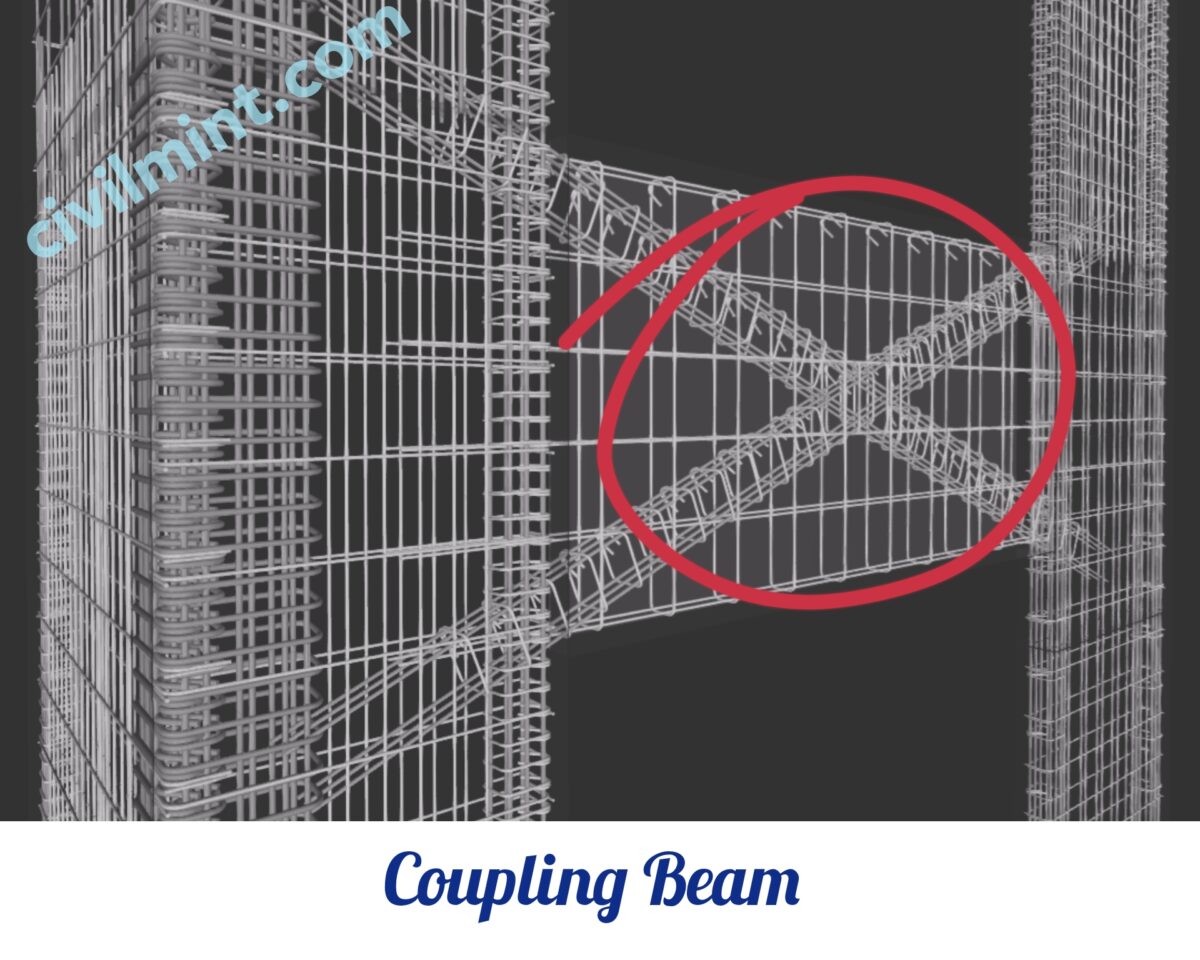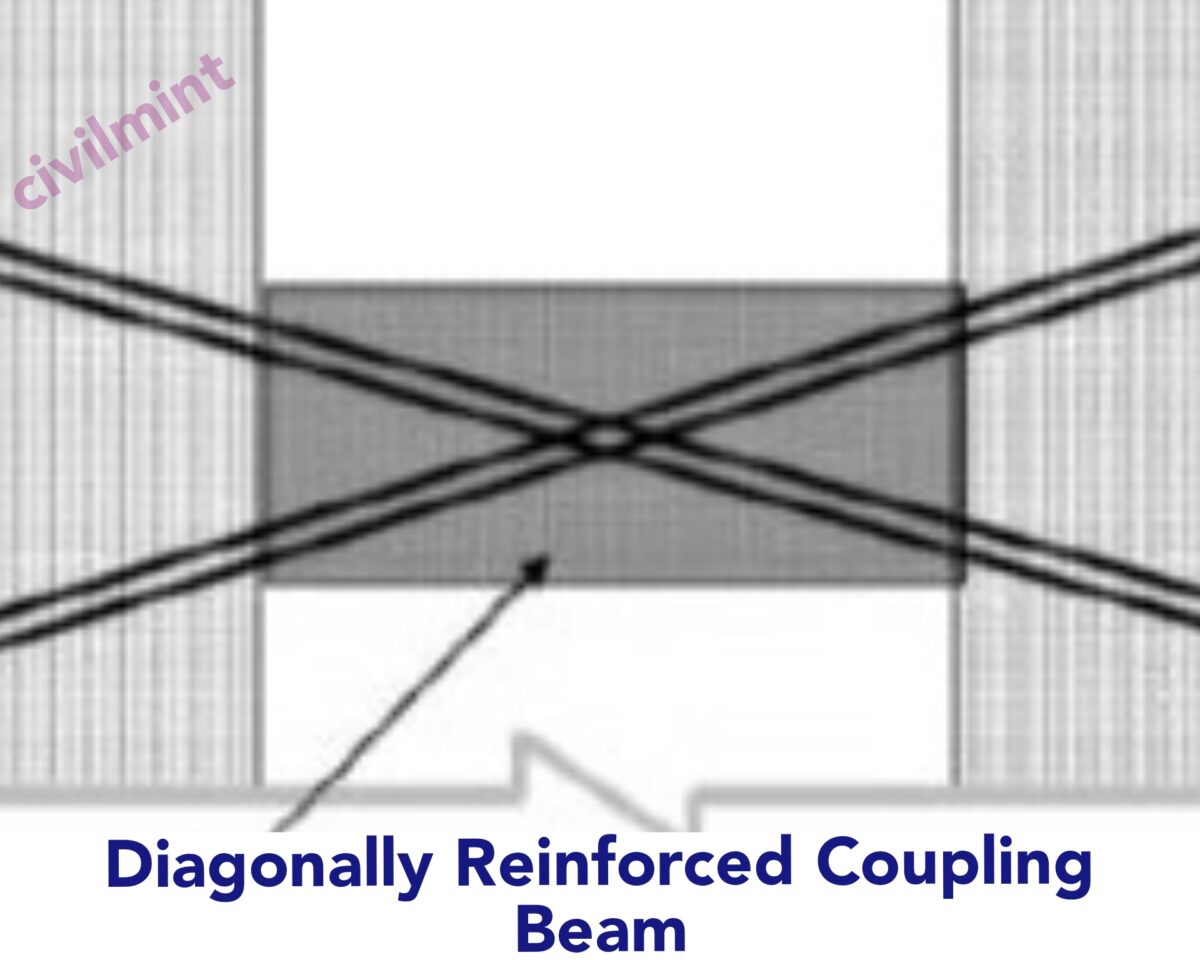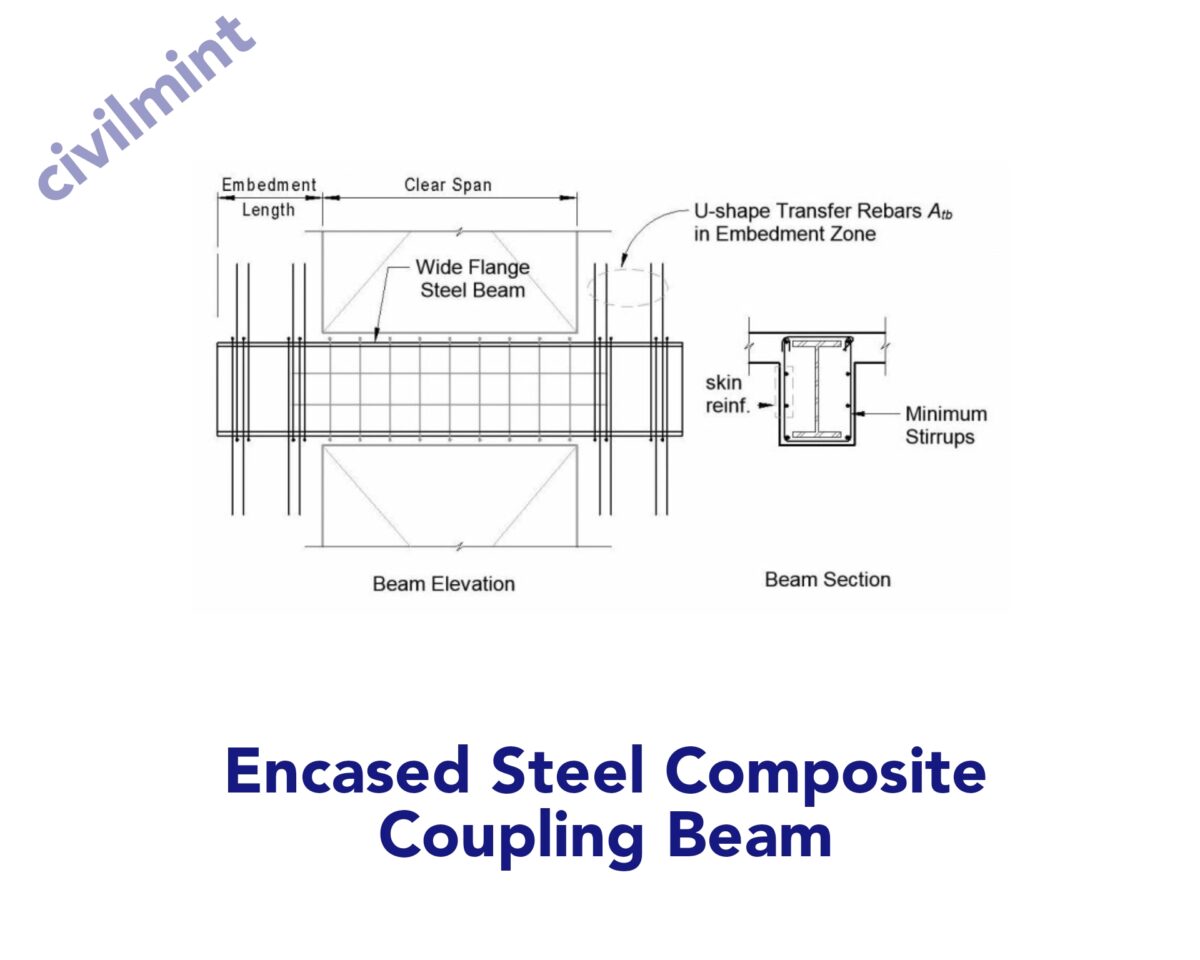Coupling beam means combination of two beams. In this blog article, I will describe about RCC Coupling Beam.
Table of Contents
Definition
Coupling beam is a lateral force resisting system designed to provide stability to the structure.
Description
Coupling beams play an important role in connecting various structural elements such as shear walls, columns or frames. Their primary purpose is to increase the ability of a building to withstand lateral forces, especially during seismic events.

Coupling beam help distribute loads evenly between these structural components and provide support for openings in shear walls. Typically, coupling beams are made of reinforced concrete or structural steel and are known for their distinctive design with short, deep and high aspect ratio, which provides them with the necessary moment capacity to effectively resist lateral forces. Is.
Types Of Coupling Beams
1. Conventional Coupling Beam:
These are reinforced with horizontal rebars and closely-spaced stirrups, making them the most common and relatively simple type of coupling beam to design and construct.

2. Diagonally Reinforced Coupling Beam:
These incorporate diagonal rebars, in addition to horizontal rebars and stirrups. Although more complex in design and construction, they boast higher moment capacity and energy dissipation capabilities.

3. Encased Steel Composite Coupling Beam
Encased steel composite coupling beams are used as alternatives to address construction challenges compared to diagonally-reinforced concrete coupling beams. They use steel members, which have been shown to perform well in terms of flexibility and energy absorption, similar to concrete coupling beams. These steel coupling beams are part of seismic design standards for buildings.

Design Information
The design of a coupling beam depends on a variety of considerations, including the anticipated lateral forces, the choice of structural material, and the specific geometry of the beam. Structural analysis software is helpful in calculating these lateral forces. Material characteristics, comprehensive strength and stiffness, as well as beam dimensions such as depth and span, have a substantial impact on the design process. After establishing these key factors, designers follow building codes, which determine the minimum required reinforcement and reinforcement spacing.
Construction
Constructing coupling beams shares similarities with other reinforced concrete or structural steel beams. However, special considerations are necessary:
Precise placement of reinforcement is crucial to ensure the beam meets strength and stiffness requirements while avoiding congestion and maintaining adequate cover for reinforcement.
Joints between coupling beams and connected structural elements must be robust and durable, ensuring efficient lateral force transfer.
Applications And Uses
Coupling beams find use in various structures:
- High-rise buildings: Strengthen lateral force resistance.
- Buildings in earthquake-prone regions: Distribute earthquake loads evenly.
- Buildings with large openings in shear walls: Provide support for openings.
- Buildings with irregular shapes: Stiffen and improve lateral force resistance.
- Bridges and industrial facilities: Adapted for diverse structural needs.
Coupling Beam Examples
- High-Rise Shear Walls: Shear walls in high-rise buildings employ coupling beams to enhance lateral force resistance.
- Seismic Retrofitting: Buildings in earthquake-prone regions use coupling beams to distribute loads evenly between columns.
- Shear Wall Openings: Coupling beams frame openings in shear walls, offering structural support.
- Complex Structures: Irregular-shaped buildings utilize coupling beams to stiffen their structures and bolster lateral force resistance.
Wrapping Up
Coupling beams are pivotal structural elements that elevate lateral force resistance, stiffness, and strength in various structures. Widely employed in high-rise buildings, earthquake-prone regions, and structures with specific needs, coupling beams contribute significantly to the overall structural integrity.
